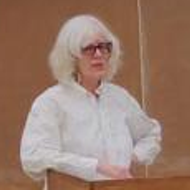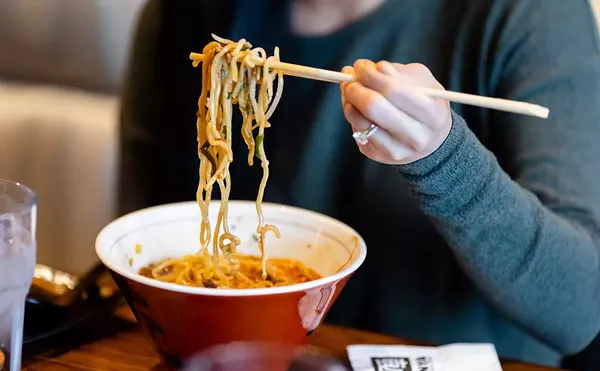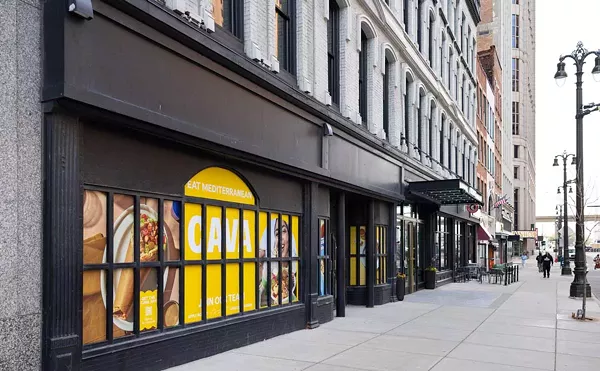
Audio By Carbonatix
[
{
"name": "GPT - Leaderboard - Inline - Content",
"component": "35519556",
"insertPoint": "5th",
"startingPoint": "3",
"requiredCountToDisplay": "3",
"maxInsertions": 100,
"adList": [
{
"adPreset": "LeaderboardInline"
}
]
}
]
Ray Ahmad has specialized in opening Lebanese restaurants where the competition is less intense — Garden City, Ann Arbor, Romulus — rather than in the thick of things in Dearborn. Now he's taking a chance on the southwest side of Detroit, where a venture called Amigo Mediterranean Restaurant failed to thrive six years ago. Perhaps the name was confusing to potential customers from the neighborhood — it can't be that they preferred having a choice only of Mexican, Mexican, Central American, pizza and Mexican.
Ahmad and brother Mike are serving fine versions of familiar favorites — the menu is short but covers the usual bases — at prices well cheaper than those of the Lebanese restaurants a few miles farther west in Dearborn. The highest priced entrée is $12, and that will get you three skewers of meat plus your rice, pickles and salad. Most entrées are $6 or $7 — for dishes that cost $12-$15 at other places. Sandwiches run $3.25-$3.99.
The Ahmads have hired a crew of mostly Latina waitresses who are learning how to pronounce the menu items, and they've fixed up the former Taqueria Mexicana nicely, with pale blue walls, generic, abstract landscape pictures and a profusion of artificial flowers that might be simply over-the-top in most situations but here indicate that they're trying really hard. My friend of Lebanese extraction noted that it didn't look like a Lebanese restaurant — no shiny gold on the walls.
When we remarked to the waitress on the sparkling cleanliness of the place, she said that she and her co-workers were under orders to clean every half hour. An air freshener misting machine on a timer was removed after patrons complained.
There are Middle Eastern restaurants that serve fresh, puffed pita right from the oven, and there are Middle Eastern restaurants that serve pita triangles in a plastic bag. Beirut Kabob is the latter, as you might guess from the prices.
Some of my favorite items were meat entrées, though there's not much lamb on the menu yet. Kafta kabob, here made of ground beef (or lamb), is perfectly broiled. Shish kabob of beef tenderloin, tasty though chewy, is broiled with onions that come out charred and sweet. Shish tawook (chicken) is juicy. The meats are served, of course, with a garlic sauce that's sharp but creamy, salty, just right. I could eat this with a spoon if it weren't so much better on something.
Equally good is mujadarah, with so much more flavor than one might expect from lentils. Pink-tinged fried onions are on top. The large serving is glistening but not greasy.
Shawarma is less good, with the chicken having an unusual off taste. The Ahmads are currently serving beef shawarma but plan to change that to a mix of beef and lamb. A shawarma entrée, just sliced on the plate with a side of tahini sauce, is not really the way to go, though. Shawarma is better wrapped up in pita, preferably with vegetables that have been allowed to mingle with the scraps of meat as they fall off the shawarma cone.
My friend enthused about the fattoush. The small is large, with lots of sliced cherry tomatoes, lots of pita chips, and the sumac- tinged dressing that pulls it all together.
Other side items vary in quality. Kibbeh is wonderful, with just the right hint of allspice. Chicken lime rice soup is excellent too, with big chunks of chicken and orange flecks of carrot against the golden broth. Lentil soup is blander. Tangy yogurt cucumber salad creates just the right fusion of mint and garlic, with creamy yogurt as the binder. Cold spinach pies are too empty, and the grape leaves could use more stuffing too. Falafel are good enough, crisp and smallish — a sandwich costs only $3.25. Hummus is perhaps blander than most.
Baba ghanoush — "hummus' ugly sibling," according to my friend, who was traumatized as a child when he tasted one when expecting the other — is quite smoky, garlicky and ample, topped with pine nuts. You'll also find mutabal on the menu, which at Beirut Kabob is the same thing. I found a learned treatise on the Internet about what the writer said should be the difference between baba and mutabal; the writer was Syrian and did not expect Lebanese menu writers to get it right.
A couple of weeks ago, I wrote that for the most authentic Mexican food, diners should go to its native place (for our area) in Southwest Detroit. The same argument might be made for Middle Eastern food — why eat elsewhere than Dearborn? Well, one reason is that you don't always find yourself in Dearborn when you get a hankering for hummus (or in Southwest Detroit when you want guacamole).
But another reason to trust far-flung Middle Eastern restaurants is that they just haven't suffered much bastardization of the cuisine (I say this not having dined in the Middle East; maybe visitors from there think our Al-Ameers and Cedarlands are hopelessly compromised!). Actually, I can't think of a Middle Eastern restaurant in the metro area that's run by Yankees (e-mail me if I'm wrong), which should account for continuing high levels of authenticity.
Let's hope Beirut Kabob survives in its adopted neighborhood, to promote peace, love and understanding among the cultures, and to provide me with a good cheap place to eat.
Jane Slaughter dines for Metro Times. Send comments to letters@metrotimes.com.






